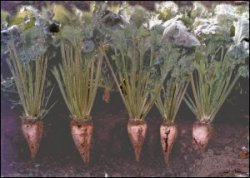Beet Sugar vs Cane: Which One Offers Better Environmental Impact?
Beet Sugar vs Cane: Which One Offers Better Environmental Impact?
Blog Article
Exploring Beet Sugar Vs Walking Stick: Nutritional Benefits and Culinary Uses
The comparison between beet sugar and walking stick sugar expands past plain taste and structure, exposing intricate nutritional profiles and culinary applications that warrant mindful exam. While both sugars share an usual foundation in sucrose, their distinct attributes can influence not just health and wellness factors to consider however likewise the end results of numerous dishes. Understanding these distinctions can assist in making educated options for both dietary requirements and culinary preferences. As we explore the subtleties of these 2 sugars, it comes to be clear that the effects of their usage are more extensive than one could at first assume.
Introduction of Beetroot Sugar
Although both beetroot sugar and walking stick sugar offer comparable functions in cooking applications, beetroot sugar is obtained specifically from the sugar beet plant (Beta vulgaris), an origin vegetable grown in temperate environments. This procedure begins with the harvesting of sugar beetroots, which are after that cleaned, sliced, and based on removal strategies to produce sugar-rich juice (beet sugar vs cane). The juice undergoes filtration and formation, causing the granulated sugar typically used in industries and families
Nutritionally, beet sugar is chemically similar to cane sugar, both mostly containing sucrose. Beet sugar production often tends to have a lower ecological impact, as sugar beets require much less water and can be grown in varied agricultural problems. Additionally, the growing of sugar beets can add to plant rotation methods, enhancing soil wellness.
Beet sugar commonly contains trace amounts of minerals and vitamins, including calcium and potassium, although these are negligible in common usage. In food preparation and baking, beetroot sugar executes equivalently to its cane equivalent, making it a flexible sugar. Its neutral taste profile permits it to be seamlessly integrated right into different dishes without changing the desired taste of the last item.
Overview of Cane Sugar
Walking cane sugar, originated from the sugarcane plant (Saccharum officinarum), accounts for roughly 70% of worldwide sugar manufacturing. This functional sugar is grown in tropical and subtropical regions, with significant producers consisting of Brazil, India, and China. The removal procedure entails squashing the sugarcane stalks to launch the juice, which is then clarified, evaporated, and taken shape to produce raw walking stick sugar.
Walking stick sugar is identified by its penalty, white granules and is commonly discovered in both granulated and powdered forms. Its taste account is typically called sweet and tidy, making it suitable for a large range of cooking applications, from preparing and baking to sweetening drinks.
Along with its culinary usages, walking stick sugar also serves as a preservative in jams and jellies, in addition to a fermentation representative in the production of alcoholic beverages. The sugar is frequently processed into various products, consisting of molasses, brown sugar, and fluid sugar, each offering unique qualities that can improve various recipes. In general, description walking cane sugar remains an essential component in kitchen areas worldwide, underscoring its importance in both cooking traditions and modern gastronomy.
Nutritional Comparison
When contrasting beet sugar and walking cane sugar, it is essential to analyze their nutritional profiles to understand their influence on wellness. Both kinds of sugar are mainly composed of sucrose, which is a disaccharide composed of sugar and fructose. This indicates that, in regards to caloric web content, they are nearly similar, providing about 16 calories per tsp.
Nevertheless, there are subtle differences in their handling and mineral content. Beet sugar is frequently refined using bone char, which might not appropriate for vegetarians and vegans, while walking stick sugar can be a lot more straightforwardly fine-tuned. In terms of trace element, walking stick sugar may maintain somewhat extra magnesium, potassium, and calcium due to less extensive processing, though these quantities are minimal contrasted to daily suggested consumption.
Moreover, both sugars add to the same health risks when consumed in excessive amounts, such as browse this site weight problems, kind 2 diabetes, and oral concerns. Inevitably, the selection between beetroot and walking cane sugar might hinge extra on individual choice or dietary restrictions as opposed to significant differences in dietary worth. Comprehending these subtleties can help consumers in making educated nutritional options.

Culinary Utilizes of Beet Sugar
Beet sugar, a flexible sugar stemmed from sugar beets, discovers numerous applications in culinary methods - beet sugar vs cane. Its improved crystals liquify conveniently, making it an optimal active ingredient for cooking, cooking, and beverage preparation. In the realm of cooking, beetroot sugar adds to moisture retention and browning, boosting the structure and taste of pastries, cakes, and cookies
Additionally, its neutral flavor profile permits it to blend seamlessly into different recipes without overpowering other components, making it ideal for both mouthwatering and wonderful recipes. Beet sugar can also be used in sauces, sauces, and dressings, where it stabilizes level of acidity and improves the total preference.
In beverages, beet sugar is generally made use of to sweeten tea, coffee, and alcoholic drinks, giving a constant sweet taste that complements varied taste profiles (beet sugar vs cane). Additionally, it functions as a preservative in jellies and jams, guaranteeing a stable product with boosted service life
Culinary Use Cane Sugar
Sweet taste is a basic aspect of lots of culinary creations, and walking stick sugar plays a critical function in accomplishing that equilibrium. Cane sugar improves flavors in treats, supplying the sweetness necessary for cookies, cakes, and breads.
In savory dishes, walking cane sugar can balance acidity and resentment, improving the general taste account. It is generally visit homepage used in sauces and sauces, where it aids to create an unified mix of wonderful, salted, and umami notes. Furthermore, walking cane sugar is an essential ingredient in maintaining fruits, as it serves as an all-natural preservative, inhibiting microbial growth.
In beverages, walking cane sugar is frequently preferred for sweetening sodas, teas, and mixed drinks, enabling a clean, pure sweetness. Its flexibility makes it a staple in both home cooking areas and expert culinary settings, showcasing its value in achieving culinary quality.
Conclusion

The comparison in between beet sugar and cane sugar prolongs past mere preference and appearance, disclosing elaborate nutritional profiles and culinary applications that warrant cautious exam.Although both beet sugar and walking cane sugar serve comparable functions in culinary applications, beet sugar is obtained especially from the sugar beet plant (Beta vulgaris), a root vegetable grown in pleasant environments. Beetroot sugar production tends to have a reduced environmental effect, as sugar beets call for less water and can be grown in varied farming conditions. The sugar is usually processed into various products, consisting of molasses, brownish sugar, and fluid sugar, each offering special qualities that can boost different recipes.Beetroot sugar, a flexible sweetener derived from sugar beetroots, finds many applications in culinary techniques.
Report this page